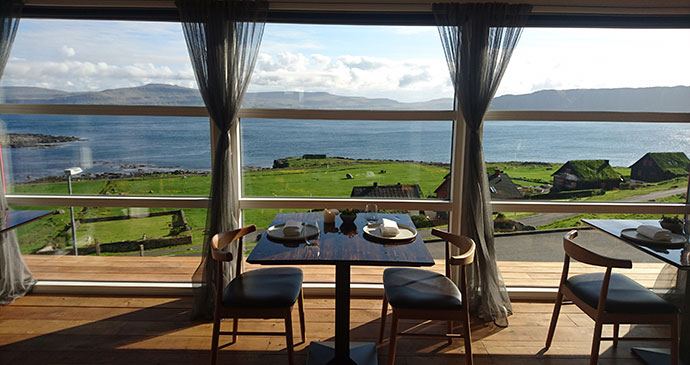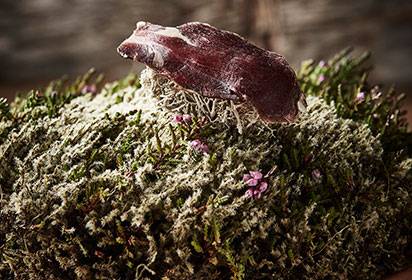Written by KOKS
 The stunning view from KOKS rivals its delicious food © Laura Pidgley
The stunning view from KOKS rivals its delicious food © Laura Pidgley
Our friends at KOKS, the innovative Tórshavn-based restaurant that champions the ancient culinary practices of the Faroe Islands, tell the story behind ræst, one of the most misunderstood aspects of Faroese culture.
“When meat or fish is neither fresh nor dried, it is called ‘ræst’, which can’t be translated in any other way than half rotten. A fully deserved predicate, when we take into account the horrible smell, unpleasant mouldy looks and the often large population of maggots. Ræst meat is usually cooked before served, although some prefer to eat it when it is raw and somewhat wind dried. I have seen a whole boat crew (8 men) with a great appetite eat raw pilot whale, one which was so rotten that the smell bothered me in an open boat, and the boat’s floor was white because of the maggots that were picked out of the meat.”
These words were written by the Danish doctor P L Panum after his visit to the Faroe Islands in 1846. You might read this and think ræst is as disgusting as he did, but don’t be too quick to judge – the clash between cultures is often difficult to understand.
No Faroese person has ever been embarrassed while sharing a meal with friends and family containing the fermented traditional foods of the islands – it only becomes an embarrassment when a foreigner mocks the food, and the way of life that comes with it. Criticising the food of a culture is almost an attack on one’s identity, and this is why so many Faroese argued with Panum. Plenty of people tried to prove him wrong, including Dean Hammershaimb, father of the modern orthographe of Faroese, who actually tried to write the term ræst out of his 1886 book, Faroese anthology.
One of the reasons that ræst has developed such a bad reputation is because there is no easy way in which to translate it. To the Faroese, the word ræst does not mean ‘half rotten’ as it has been referred to – rotting meat would not be as pleasant to eat as ræst! With little trees on the islands and no salt production due to the adverse weather conditions, the Faroese could not smoke or salt meat to preserve it in the same way other cultures could. Therefore, they had to find an alternative method of preservation – hanging the meat or fish in a barn and letting nature do the rest.
It’s still a popular method of preservation today, and one that is unique. Take ræst lamb meat, for example – the weather, drying location, animal gender and how it has been slaughtered all have an impact on how it looks and tastes. Personal preference also plays a role, as some people take their meats down earlier if they like the flesh soft, while others leave it to dry for longer, until it gets the texture of wind-dried ham. The flavours, look and quality of raest products can differ from year to year simply because it is a natural process.
Maybe 1846 was a really bad year for fermenting meats, or perhaps Panum just visited some ungifted farmers. But his description does not match the fantastic and unique traditional ræst foods produced in the Faroes, and particularly those focused on at Restaurant KOKS. Ræst is something unique in the gastronomic world. Ræst is a flavour that has the power to surprise the people that travel from all over the world to discover it in the Faroe Islands.
Looking to learn more about the Faroe Islands? Check out our comprehensive travel guide:

